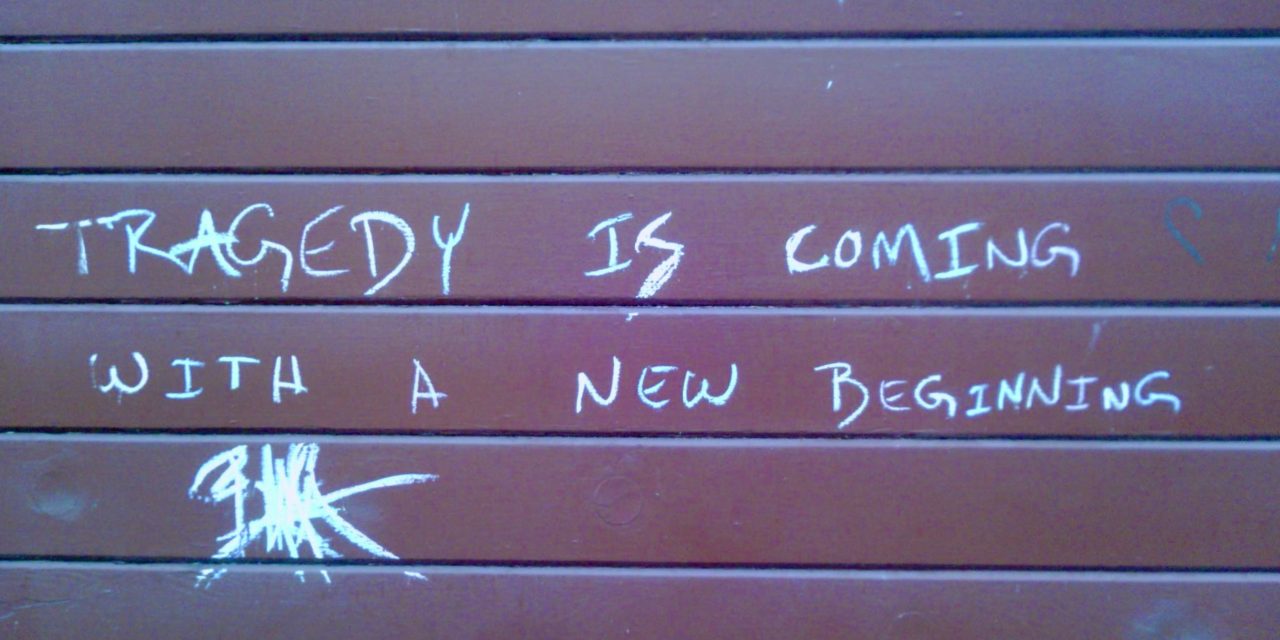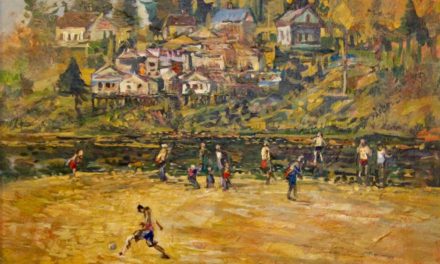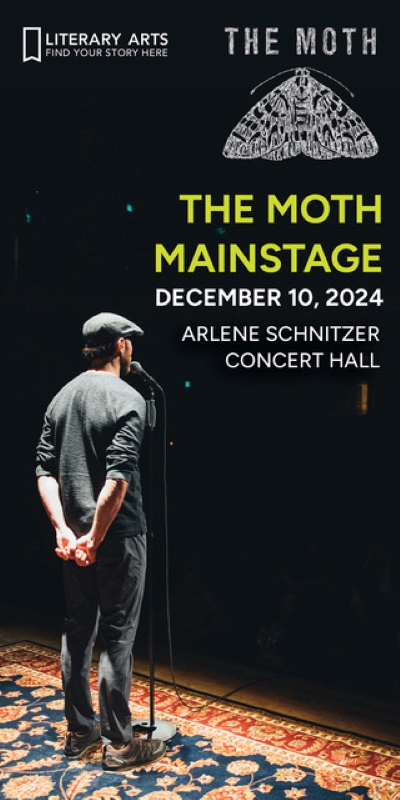By Daniel Buckwalter
Near where I live in Eugene, there is an alley. It is not a bucolic alley. No one is tending to or nurturing a wealth of wild flowers as part of an effort to beautify the urban landscape.
No, the truth is there are dumpsters and trash, the occasional homeless person poking through each, and plenty of graffiti. As a rule, I don’t usually pay attention to graffiti. It is usually unintelligible to me.

Daniel Buckwalter; photo by Randi Bjornstad
However, recently I was struck by one line on a wall, an almost Biblical line. Its author took great pain, I think, to make it legible, so I stopped to read it.
“Tragedy is coming with a new beginning.”
Now, given the spring we just endured and the season ahead that is wrought with tension every day, that line and its author could be going in any number of ways. There’s no shortage of meaning to the line. Just read a headline.
Yet I was struck with its relationship to the arts. Simply put, it has been a dreadful time for the arts. Tragedy has hit.
Carnegie Hall and Lincoln Center in New York City, as well as the Lyric Opera of Chicago and the San Francisco Opera all announced recently that they have canceled the rest of their performances for 2020.
In the face of the rampaging COVID-19 (Are we even past the first wave?), this will only get worse. At this point, I’m not sure when (or if) we’ll see Phase 3 of Oregon’s reopening plan.
Locally, when will we hear from the Eugene Symphony Orchestra about the rest of 2020? Eugene Ballet or Ballet Fantastique? Delgani String Quartet or the Oregon Mozart Players? The Shedd Institute for the Arts or The Jazz Station?
Tragedy has hit artists of all stripes who have made their work their calling. How could it not? “Driving for dollars” from gig to gig was a staple part of life in the best of times, and now we’re in a recession that is fueled by a virus we can’t contain and with the frightening, though some economist say distant, possibility of a depression.
This is going to bruise artists for years, if not a lifetime.
And what becomes of the arts organizations, the concert halls, the theaters, the galleries, the classes?
One school of thought is that after layoffs, these groups could devolve to just one person, an executive director perhaps, who will be paid a token amount per year. Then the organizations will lie low and hold on for dear life. But will they even survive?
And what about the structures that house the arts in Eugene and Springfield?
The Hult Center and Cuthbert Amphitheater, both run by the city of Eugene? The Shedd, in the middle of its multi-million-dollar expansion? The stages of the venerable theater companies (Oregon Contemporary Theatre, Very Little Theatre, Cottage Theatre, Wildish Community Theater)? The many respected art galleries — The Karin Clarke Gallery, Maude Kerns Art Center, White Lotus, Emerald Art Center, and The New Zone, to name just a few?
How long can these structures withstand the punishment of being idle in the face of the rampaging coronavirus?
I wish I was optimistic, but, like everyone now, I have seen the partial dimensions of COVID-19, and I fear the full dimensions. COVID-19 will endure, and I hope the Eugene-Springfield arts community can ride out this storm and survive the trip.
And I do hope for a new beginning, whenever it comes, even with trepidation for what it might look like.











Instead of asking about the structures that house the arts in Eugene and Springfield, let’s ask about the structures that house the artists.
We have lived in a homelessness and housing state of emergency situation for years. 3300 unsheltered people are facing the epidemic.
In times of struggle, it is often the artists that lead. We must work together to solve everything at once. How can we meet the challenge of supporting and nurturing the best within us through our community problem solving?
How do we employ our resources for the greatest good for the greatest number?